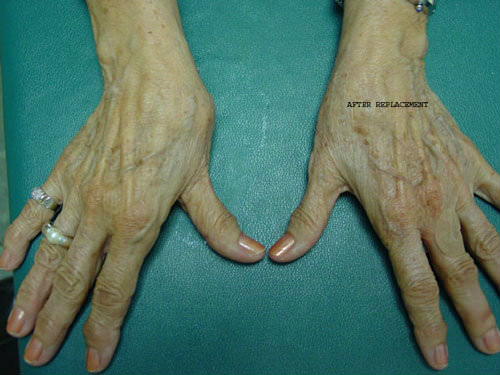Dupuytren’s is a deformity of the hand requiring years to develop.
The area impacted is the tissue layer beneath your palm. Knots of tissue begin to form resulting in a thick cord pulling your fingers into a bent position. You will be unable to completely straighten out your fingers. The fingers generally affected are the pinky and ring finger. The first symptom you will notice is the skin on your palm starts to thicken. As your condition advances, you will notice dimples or puckers in your skin.
You may see a tissue lump forming right on your palm. Although the lump does not generally cause pain, it can be very sensitive when touched. As your condition progresses, the cord of tissue can reach all the way to your fingers. Eventually, the cords will start to become tighter. Your fingers may be forced towards your palm. There are different degrees of severity. In some cases, your middle finger may be affected in addition to your pinky and ring finger.
The condition will rarely impact either your index finger or thumb.
You can develop Dupuytren’s disease in one or both of your hands. In most cases, the condition is more severe in one hand than the other. This is no known cause of Dupuytren’s disease at this time. There are several different treatments available, although all of them break the cord holding your fingers down. The correct procedure is dependent on your overall health and the severity of your condition.
Needling involves the insertion of a needle to break the tissue cord. Needling can be repeated whenever necessary. There are numerous benefits to needling including no incision being necessary, requiring minimal physical therapy after treatment and the ability to treat more than one finger simultaneously. The main drawback is the procedure is inappropriate for specific areas due to the possibility of damaging a tendon or nerve.
Once the disease becomes advanced, surgery may be required due to limited functionality. The tissue in your palm is removed through surgery. Surgery will provide you with a solution that lasts for a much longer period of time than any of your other options. The biggest issues are the length of time you will need to fully recover and the extensive physical therapy you will need once your surgery has been performed.
Enzyme injections involve using a specific enzyme to weaken and soften the tight cord located in your palm. After your injection, your physician will move your hand to try to straighten your fingers by breaking the tissue cord. Xiaflex has received approval from the FDA for this procedure. Injections have almost the same benefits and drawbacks as needling.








